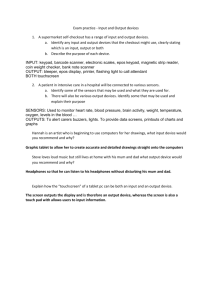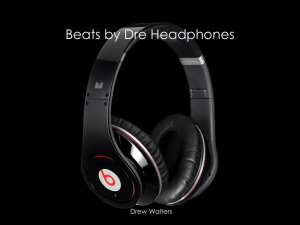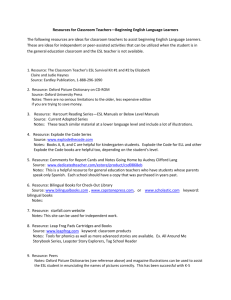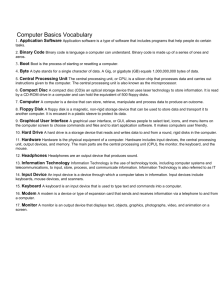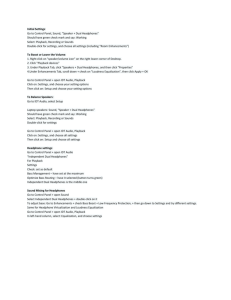Introduction - Stanford University
advertisement
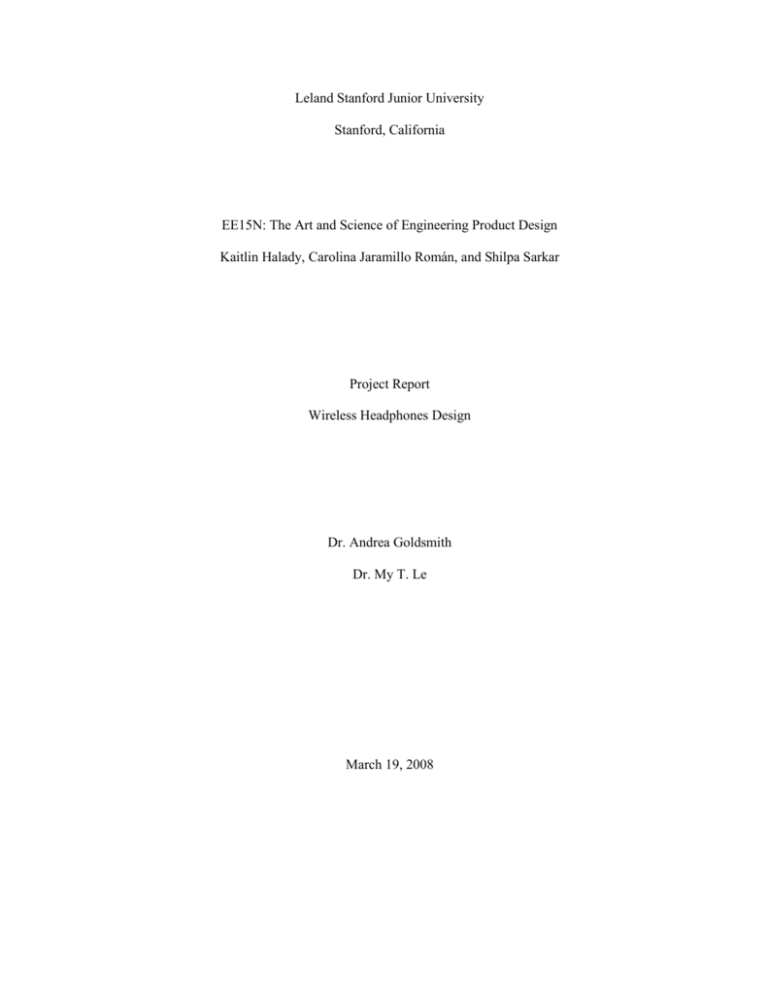
Leland Stanford Junior University Stanford, California EE15N: The Art and Science of Engineering Product Design Kaitlin Halady, Carolina Jaramillo Román, and Shilpa Sarkar Project Report Wireless Headphones Design Dr. Andrea Goldsmith Dr. My T. Le March 19, 2008 2 Table of Contents Abstract…………………………………………………………………………………………....3 Executive Summary……………………………………………………...……………………....3 Introduction……………………………………………………………………………………....4 1. The Headphone/ mp3 Industry………………………………………………………..4 2. Problem Statement………………………………………………………………….....4 3. Why wireless?..................................................................................................................4 Market Analysis………………………………………………………………………….............5 1. General Survey Info……………………………………………………………...........5 2. Brands………………………………………………………………………………......5 3. Types of Headphones…………………………………………………………………..5 4. Headphone Usage……………………………………………………………………....6 5. Hours of Usage…………………………………………………………………………6 6. Important Factors……………………………………………………………………...6 7. Comfort Level…………………………………………………………………….........7 Objective Tree…………………………………………………………………………………....8 Competitors…………………………………………………………………………………........8 Detailed Design………………………………………………………………………………......9 1. Inner earbuds …………………………………………………………………............10 2. Adjustable behind the ear piece……………………………………………………..10 3. User Interface…………………………………………………………………………10 4. Charger/Adapter……………………………………………………………………...11 5. Materials……………………………………………………………………………...11 6. Colors………………………………………………………………………………….11 7. Technical components: Headphones………………………………………………..12 8. Technical components: Adapter…………………………………………………….12 9. Technical components: Charger……………………………………………………12 Budget ……………………………..………………..…………………………………………..13 Retail……………………………..………………..…………………………………………….13 Schedule……………………………..………………..………………………………………...14 Alternative Design…………..………………..………………………………………………...15 1. Morph Chart…………..………………..…………………………………………….15 2. Compatibility………..………………..……………………………………….……...15 3. Aural Headphones vs. Canalphones………..………………..……………………...16 4. Style of ear piece………..………………..……………………………………….….16 5. User interface………..………………..…………………………………………...….16 6. Wired vs. Wireless………..………………..………………………………….……...17 7. Charger………..………………..……………………………………….…………….17 8. Adapter………..………………..……………………………………….……………..17 Future Predictions………..………………..…………………………………………………...17 Conclusion………..………………..……………………………………………………………17 References………..………………..……………………………………………………………19 Abstract Today’s wireless headphones are not made for the college student’s budget. Therefore, our goal is to design affordable wireless headphones while not compromising the industry standard for 3 headphone music quality and comfort. By studying current headphones and surveying our market we came up with some different design possibilities. We then talked to industry experts to pick the cheapest of our design alternatives. The result is a pair of wireless canalphones with an over-theear piece. These headphones are at the forefront of the industry because they are wireless. Our design fulfills a niche in the affordable headphone market that was originally empty. Executive Summary Mp3 players are immensely popular especially with college students. Therefore the headphone industry is constantly growing and developing to keep up with their consumers. The problem is that the newest headphone technology, primarily wireless, is not available to college student because of the exorbitant cost. Consequently, our proposal is to design a pair of wireless headphones that cost between $60 to $80. By surveying 89 college students, we found out that most of them owned the Apple headphones that come with the iPod; as a result, we decided that our design for wireless headphones would only be compatible with Apple so as to follow the principle of specialization and end up with a better product. From our survey, we also discovered that our target market felt limited by the wire between their mp3 player and their headphones; this fact confirmed that a wireless headphone was the way to go. Since college students use headphones for an average of 1.5 hours a day, it came as no surprise that they consider price and comfort as their first priorities when purchasing a pair of headphones. For best understanding our market’s preferences, we started analyzing the wireless headphones that are already in the market. Particularly, by scrutinizing JayBird’s and Sennheiser’s headphone designs, we decided which of their features and functions best fit with our own headphone design. We concluded that our wireless headphones needed to have inner earbuds since these provide a natural seal from the environment, resulting in excellent sound quality. After reading customer reviews for the Sennheiser and Jaybird, we decided that a user interface was necessary for our headphones; specifically, we added a volume control and track changer. The materials we chose for the design range from soft silicone to plastic, and with the intention of making this last one stylish, we will paint it with iPod’s current metallic colors. To have our headphones work for our customer’s current lifestyles, we added a charging case and an adapter. The charging case is essentially a portable charger that has a battery to hold additional charge for the headphones. The adapter plugs into the Apple iPod so that the customer can use our Bluetooth headphones with current iPod models. All of these features, as well as the technical components and the retail price, were taken into consideration when drafting our budget, which is currently around $60 to $70.When we drafted our morph chart, we were able to see the many alternative designs for our headphones. We had to make decisions between mp3 vs. iPod-only compatibility, aural headphones vs. canalphones, over-the-ear piece vs. no ear-piece, and wire between earbud vs. completely wireless. Other features that we took into consideration were the user’s interface type and place, the model of the charger and the need for an adapter. Our main factor when making these decisions was the cost of each option versus the necessity/payoff. By taking into account different design possibilities, we have designed a product that fits a college student’s daily life. Our wireless headphones allow them to engage in different activities without even noticing the fact that they are wearing our headphones. Introduction The Headphone/mp3 Industry 4 Technology plays a huge role in the daily life of the average consumer. The mp3 player is an especially recent staple that major companies such as Apple, Microsoft, and Sony have all adopted as a key product. Specifically, Apple has sold 110,000,000 units as of September 2007 and is said to be the fastest selling music player in history1 Consequently, the mp3 accessory industry has also exploded to provide consumers with the ultimate portable music experience. Millions of people use headphones connected to their mp3 players for multiple hours a day. Consumers want to be able to take their mp3 players and headphones anywhere and everywhere. People are commuting, jogging, cooking, cleaning, and studying with them. However, many headphones are not ideal for all of these life situations. College students complain about the comfort, size, and practicality of many popular headphone styles including Apple’s current earbud headphones. We have decided to design a pair of wireless headphones with the understanding that the headphone industry is constantly developing to fit consumers’ desires. Problem Statement Our goal is to design a comfortable versatile pair of headphones that are reasonably priced for a college student. We want the consumer to have an unrestricted range of motion while participating in every day activities such as exercising, biking, and studying. The consumer should be pleased with both the fit of our product and the fact that they did not have to spend a fortune. While they probably won’t be the cheapest headphones on the market, we want its price to fall into the average price range of most headphones. Although there are wireless earbud headphones already on the market, their target consumer is the upper class who are willing to spend $200 or more. Our earbud headphones will cost between $60 and $80 and still have the features of higher priced headphones such as being wireless, water-resistant, comfortable, and having volume control/track changing. There is a lot of competition in the headphone market, but by looking at the current products out there we believe we can introduce new and improved headphones. This endeavor is meant to create a better product that will improve the consumers’ comfort level while listening to music, and thus improve their quality of life. Why wireless? In our research to design headphones we found that the wire connecting the headphones to the mp3 player often detracted from the user’s listening experience. It became tangled, limited the range of motion for the user, and required frequent re-adjustment. The most revolutionary headphones to come out in the past year have all been wireless earbuds. From our research we feel that these kinds of headphones will dominate the market in the future and increase the consumer’s desire for wireless headphones. Thus, we believe that it is imperative for our headphone to be wireless so that they are not obsolete by the time we release them. Market Analysis In 2006, 73% of 1200 college students polled were iPod users2. Consequently, we might as well market our product towards iPod-using college students, making our wireless headphones be compatible with the Apple iPod since it is the most popular mp3 player on the market today. To 1 2 Wikipedia, http://en.wikipedia.org/wiki/IPod Fox News, http://www.foxnews.com/story/0,2933,198632,00.html 5 better understand our target market, which is the college student, we got feedback from approximately ninety Stanford students regarding their headphone preferences. The results and the impact on our design are discussed below. General Survey Info; * Survey emailed to approximate 500 students (freshman to seniors) * 89 responses * All students attend Stanford University * 100% of all those who responded use headphones. Brands: Fifty percent of our student responses use the standard wired Apple earbuds sold with the iPod. This data reinforced our idea of creating our headphones to appeal to Apple consumers. Shown below is a graph that portrays the different headphone brands used by students. The prices for these headphones are generally in the $20 to $80 dollar range; accordingly, we tried to stay within these cost boundaries so our product can be competitive. 20% Apple Sony Bose Philips Sure *Other brands 3% 50% 4% 6% 17% Other brands: Panasonic, Sennheiser, Audio Technica, Samsung, Creative, Grado, Beyerdynamic, Etymotic, Koss, Uknown, Skull candy, V-moda, JVC-Gummy) Type of Headphone: Wireless vs. Non-wireless We don’t want to produce a product that most of our consumers already have. Thus, in our survey we found out what percentage of these students have wired or wireless headphones. Specifically, 86% use wired headphones, while only 7% use wireless. Since a majority do not use wireless, we feel comfortable making our headphones wireless in order to offer the consumer a new and improved music experience. 7% 7% 86% 86% Wireless Did not respond Wired Headphone Usage When designing a product, an engineer is always looking to give the consumer what they want, even before they know exactly what that is. We asked students to list the top three activities they do while using headphones in order to anticipate their listening needs. As you can see from the graph below, the most popular activities for which college students wear headphones are working out, studying, listening to music while stationary and biking. Thus we see that a college student specially needs versatile headphones that can work in multiple aspects of their lives. Work out Listen to music Study/read 6 Hours of Use From our survey we found that approximate 50% of students use their headphones one to two hours a day, while the rest use them within two hours below or above that range. These numbers helped us calibrate how long our headphones should hold charge and also the necessary levels of comfort. 50 45 40 35 30 25 20 15 10 5 0 More tha n 5 hours Between 3 to 5 hours Between 1 to 2 Hours Le ss tha n 1 hour Line 1 Important Factors Finally, we asked students what aspects they look for when buying headphones. Approximately 40% ranked comfort as the most important factor, which was followed by sound quality and then by price. Note, however, that the percentages for price from most important to less important stay more or less around 29% of students, showing that price is definitely in the top three considerations for all college students. Therefore, this data explains why we place such emphasis in providing an affordable, comfortable wireless headphone. Most Important Important Less Important Least Important 7 Price 33.7 % 25.8 % 27 % 13.5 % Comfort 40.4 % 28.1 % 25.8 % 5.6 % Style 5.6 % 7.9% 24.7 % 61.8% 38.2% 22.5 % 19.1 % Sound quality 20.2 % Comfort Level We asked students if their headphones had ever felt uncomfortable and, if so, the cause for their discomfort. We found that a whopping 76% said that their headphones have felt uncomfortable, which we feel could account for the low hours of use mentioned earlier. Of those that felt uncomfortable, shape was primarily responsible followed by headphones falling out, headaches, and wire interference. Once again, shape and consequentially comfort clearly are vital factors in our headphones. How comfortable/uncomforta ble are he adphones ? 80 70 60 Co mfo rtable Un comfo rtabl e 50 Shape Fall out/ Headache Wire 40 30 20 10 0 % To Sum it All Up… If a pair of marginally priced wireless earbuds was on the market, would you purchase them? 61.8% said Yes 38.2% said No. In the following objective tree, we have incorporated our market’s feedback and our innovative ideas: 8 Objec tive T ree Wireles s Headp hone s Comfor t Sh ape Ve rsa tility Wireles s Comp atib ility with Mac Dur able Mar ketab ility Water Re sistant Po rtable Style Pr ice Con ta in er Color s $5 0 - $70 ( mid -r ange ) Competitors Once our product is released, we will have to face competitors. Nevertheless, since our idea of design incorporates relatively new technology, we will not face more than seven direct competitors. Consequently, we are examining two of the newest wireless headphones with the purpose of learning from our competition; specifically, we want to build upon their good ideas and then incorporate our own, which will result in launching a great product to the market. Nonetheless, an advantage we have over our competitors is that we are the only ones that are targeting the college market. JayBird JB-100 In 2007, Jaybird introduced to the JB-100 to the online market for a retail price of $129.99. The JB-100 is an in-ear Bluetooth stereo headset designed for making calls and streaming music. Jaybird claims it has noise-canceling capabilities and water resistance. It comes with a nylon mesh pouch to carry and protect it3. The JB-100 includes a charging dock and a USB cable that can use power from the computer to charge. According to its webpage, the JB-100 needs to be charged for 2 hours and its usage time depends on the associated device one is using it with. In order for the JB-100 to function, it requires a Bluetooth adapter for mp3 and other associated devices, which elevates the product’s price to around $180 since each adapter is sold separately.4 The Jaybird’s website customer reviews lament the lack of a user interface and the wire between the earpieces. Also, in contrast to JayBird’s advertisement, reviews about the product show that it does not fit every ear comfortably and securely, and that you cannot have it on when wearing a beanie. Some users consider that its volume level is too low and it lacks in bass response5. Consequently, we see a lot of ground for improvement after analyzing other wireless headphones’ companies. Sennheiser Sennheiser is planning to release a completely wireless set of headphones called the MX W1’s to consumers in May of 2008. These headphones are completely unattached to each other by 3 JayBird, http://www.jaybirdgear.com/ JayBird, http://www.jaybirdgear.com/ 5 Engadget, http://www.engadget.com/2007/12/18/jaybird-reveals-jb-100-bluetooth-stereoheadset-ipod-adapter/ 4 9 using a “twist and fit system”. Also, by using this system and a choice of “ear adapters” (rubber covers over the earbuds in different sizes), the MX W1 caters to individual users. The MX W1 Wireless Headphones use a transmission technology known as Kleer, which, according to a Sennheiser representative, is “superior to Bluetooth”.6 Kleer allows the headphones to have a transmission range of ten meters and have a battery life of five hours. The headphones also come with a charger that does not need a power source. They can be charged on the portable dock up to three times before the dock itself must be recharged. The headphones also come with a USB cable and wall adapter so you can charge them anywhere. They are currently priced at $599.00. Although customers have not reviewed the product, it received the Editor’s Choice Award of 2008 when it was featured in the Consumer Electronics Tradeshow in Las Vegas7. Detailed Design Inner-ear bud (Canalphone) Known also as in-ear headphones, canalphones are earbuds that transmit sound to the ear canal by being directly placed in the canal itself. As a result, their direct contact with the ear canal causes sound isolation, which leads to greater sound quality8. By ruling out the environment’s sounds due to their natural seal, canalphones do not need the volume levels to be as high as in other types of headphones, preventing ear damage in the long run9. Consequently, in-ear headphones provide a seal from outside noises, improving the user’s musical experience as he/she can hear certain musical nuances that may go unnoticed when using a regular headphone. We will use a standard canalphone in our design as opposed to custom molding. While it would be more comfortable to custom fit our canalphones, this would also significantly increase the price of our headphones and thus disconfigurate our budget. Nevertheless, in order to make the canalphones as comfortable as possible, the user has the option of acquiring several different sizes of sleeves, which are made out of foam. As seen in the picture on the right, these sleeves are placed in the tip of the canalphone10. Accordingly, these sleeves permit us to tackle the fact that 6 http://www.youtube.com/watch?v=iunUa2ARCyA Youtube Video “Wireless Headphones of the Future” < http://www.youtube.com/watch?v=iunUa2ARCyA> 8 Encyclopedia II, http://www.experiencefestival.com/a/Headphones__Types_of_headphones/id/5118337 7 Photo #1: http://akamaipix.crutchfield.com/ca/reviews/2007/0212/In-ear-headphones.jpg Photo #2: http://content.answers.com/main/content/wp/en/thumb/4/48/200px-InEarMonitors.jpg Photo #3: http://skattertech.com/media/2007/10/shure-se110-sleeves.jpg Photo #4: http://www.markertek.com/productImage/75X75/PA752M.JPG 9 Wikipedia, http://en.wikipedia.org/wiki/Headphones Encyclopedia II, http://www.experiencefestival.com/a/Headphones__Types_of_headphones/id/5118337 10 10 people’s ears are very different since the clients are allowed to choose which sleeves mold better to their ear canal, providing comfort at all times. As to why we recommend foam for the sleeves, we consider that even though foam is not stylish, it provides adaptability, comfort and sound quality11. Additionally, foam is a very inexpensive material; current foam sleeves sell for $3 by the dozen, so the marginal production cost is practically negligible. Adjustable Behind-ear or over-ear piece By using an over-the-ear piece to secure the headphones, we take advantage of the ear’s anatomy, causing the headphones to be more properly secured. Nonetheless, to address the fact that all ears’ shape and sizes are different, our headphones’ behind-ear piece will be adjustable so that it is more customizable and comfortable for all users. As a result, our headphones will provide natural fit that the user can adjust to their comfort level. In order to explain further how the adjustable mechanism of our over-ear piece works, the website Patent Storm explains that an “adjustable earpiece includes a rigid backbone and a ductile wire coupled to the rigid backbone, wherein a first elastomer is formed over the rigid backbone and the ductile wire to provide an asymmetrical U shape to the adjustable earpiece for comfortably fitting the communication headset over the ear”12. Our adjustable ear piece will adjust vertically as well as rotate at an angle up to 90 degrees. User Interface The user interface has three functions: it can turn the headphones on and off, adjust the volume of the music, and change tracks. To accomplish these tasks we have two wheels in the right ear; the wheel on the side is for changing tracks (a toggle wheel) while the wheel on the edge is for adjusting the volume and also turning the headphones on and off. To turn the headphones off, the user just has to rotate the volume wheel past the minimum sound level until it “clicks” into place and shuts off. To help the user know whether the headphones are on or off, there is a little LED light on the left headphone that flickers green light the moment the headphones are turned on. A blue light also flickers to indicate that there is a proper Bluetooth connection. The highest level the volume wheel can go does not exceed 100 decibels, which would help ease any concern that the in-ear headphone can potentially harm the eardrum13. The wheels work by optic sensing; there are two lights and as the wheel rotates, it interrupts the light stream which alerts the device of the wheel’s movement and whether it is going clockwise or counterclockwise14. Charger/Adapter The charger is a two-part system that consists of a carrying case, which charges the headphones on the go as well as the standard external charger that plugs into a power source. The 11 http://www.earphonesolutions.com/earecrandset.html http://www.patentstorm.us/patents/6320960-claims.html Photo #5: http://images.google.com/ 13 Dorogusker, e-mail 14 Collins, e-mail 12 11 standard charger is an AC-DC converter that plugs into the wall and supplies DC to the charger to pump it into the 100mAh battery in the headphones. The case will be resemble the shape of an oblong rectangle and will be able to fit in your hand. There will be a depression for each of the headphones in the case. In order to charge, the user just places the headphones into the outlined shape and they will immediately click into place, starting to gain charge from the left ear piece. The type of battery in the case is a 1000 mAh, which will hold a charge of about 15 hours15. The standard charger will be a USB cord that plugs into the wall and then connects to a USB port in the case. We have designed the wireless headphones to be used with the Apple iPod. The current iPod models are not equipped with a wireless transmitter, although we are expecting them to be in the near future16. However, we have created an adapter so our product can be used as soon as it is released, and for those who choose not to buy the new wireless iPods and continue to use their old one. Our adapter is compatible with all current iPod models. The adapter has no battery because it runs off the iPod. We designed it to run off the iPod not only to save money, but because our survey shows that our market typically uses their headphones for 1-3 hours day. The iPod usually lasts at least 24 hours so our adapter can afford to use some of the iPod battery without cutting into the typical using time of our consumers. Materials We have discovered that the actual cost of the materials for our headphone is practically negligible. Our headphone pieces would be made primarily of plastic and painted with a shiny finish similar to most Apple products since painting is cheaper than producing different colored plastics17. As mentioned earlier, we would cover the inner-ear speaker with foam, which is an easily available material with almost no cost. We will also coat the entire plastic earpiece (including the adjustable over-the-ear part and the inner ear-bud, sans foam) with Plasti-Dip, a very cheap and durable water-resistant material that is also clear so that it will not interfere with color. This will ensure that our headphones are not damaged by sweat or minimal exposure to water (i.e if the user gets caught in the rain). Another material that we will integrate into our design is soft elastomer, which is a synthetic gel that is comfortable to wear, impermeable to air (if used for the in-ear’s protuberance) and is water-resistant. Some types of soft elastomer are silicone rubber or soft plastic, which as their name indicate, are soft materials that have the capability to adjust to the ear as well as to protect the headphones from the external world18. Colors Since we are making our headphones for Apple products, we want the color options to be aesthetically compatible with iPod products. Jesse, our advisor from Apple, told us that the pink, blue, and black color options are the most popular choices for the iPod Nano. In addition to offering these colors, we will also offer an all-white option which will resemble the classic Apple look featured in so many of their products. Technical Components for Headphones 15 Collins, e-mail Dorogusker, e-mail 17 Dorogusker, e-mail 18 Klaassen, http://www.devicelink.com/mdt/archive/07/01/003.html 16 12 Each earpiece has a speaker transducer, which is a device that converts the electric signal into music audio. A wire connects the two earpieces to each other since this reduces cost and size19. The left earpiece contains the 100 mAh battery, while the right earpiece contains the circuit board. The circuit board contains everything that makes the headphone work. There’s the Bluetooth chip, which receives signal from the adapter. There is a low-power digital-to-analog converter, which changes the digital audio signal output from Bluetooth into an analog audio signal for driving the speaker transducer so the sound is audible to the human ear. There are the tactile sensors for the two control wheels (track and volume changing/power). There is the antenna for the Bluetooth signal, which is mounted directly on the circuit board; the antenna must be kept as far away from metal as possible to avoid antenna blocking. The rest of the circuit board is comprised of switches, LEDs, capacitors, resistors, and other technical components that make headphones possible20. In the left headphone we have the battery and the charge plug for the headphones. A 100 mAh battery provides about four hours of audio playing time. The case has a plug that connects to the bottom of the left headphone. The left headphone also has two LED lights; one that is green to signal whether the headphones are on or off, and one that is blue to represent the Bluetooth signal. Technical Component of the Adapter The adapter takes the analog signal from the iPod and converts it to digital so it can be sent wirelessly to the user’s headphones. The adapter plugs in to the iPod’s 30-pin connector, which is where the iPod charger normally plugs into21. The adapter has its own Bluetooth chip and circuit board like the headphone, but power is sourced via the connector, directly from iPod battery. The adapter, therefore, can be about a quarter of the size of the iPod nano. The adapter works with all current versions of the iPod, because they all utilize the 30-pin connector that is standardized by Apple. Technical Components of the Charger Our charger-case is portable, and has its own 1000 mAh battery to hold additional charge for the headphones. This provides about fifteen hours of playback time, in addition to the four hours held by the headphones themselves. In the charger-case there is a USB plug that fits into the headphones to charge. The case itself also has another USB port on the outside with a wire that plugs in to an electrical outlet. When plugged into a wall, it is a standard charger but when unplugged it is a compact carrying case that can supply power to the headphones. Budget Piece 19 Collins, e-mail Collins, e-mail 21 Collins, e-mail 20 Estimated Cost (Dollars) 13 Headphone Battery (100 mAh) ~ .50 Bluetooth (includes digital to analog converter) 4.00 Material (Foam, Plastic, TPE) 1.00 Packaging .75 Chip to charge battery 1.00 Other components (switches, LEDs, resisters, capacitors,1.75 etc.) Plasti-Dip ~ . 50 Charger-case Plastics 1.00 AC power adapter 1.50 Adapter Bluetooth 4.00 Circuit Board/Random Electronics 1.00 Plastic Casing .50 TOTAL $17.50 TOTAL (max possible) ~ $17.50 x 4 = $70.00 or $17.50 x 3.5=$61.25 potential retail price, Both of these potential retail prices ($61.25 or $70.00) are right within our price range. Hopefully over time we can continue to lower the cost of these headphones as technology improves. Not only will it make our electronic components cheaper, but the adapter may become obsolete all together if Apple starts making iPods with wireless transmitters like Bluetooth inside them. Retail A factor that immensely influences our project’s budget is the cost of retail. Businesses like Best Buy or Radioshack charge us for selling and shipping our products. We need to multiply the sum of our raw costs by 3.5 or 4 to find our retail price. These middlemen ask for 50% to 60% commission, and while this increases our price significantly, there are not many options to avoid them22. Selling our products in online shops, like Amazon, would definitively lower our retail price. However, our product is new to our market and therefore we think it would be more lucrative to sell it in stores. If in time our product becomes highly appreciated by consumers, all retail companies will charge us less when buying our wireless headphones, contributing to lower our retail price. 22 Dorogusker, e-mail 14 Scheduling (for hypothetical release of product) 23 0 wks - Design start + 4 wks - Industrial Design + 4 wks - Mechanical Design + 6 wks - Tooling design and fabrication less than 12 wks for electrical design, so this is not critical path to this point. = 14 weeks, 1st milestone - First prototype + 8 weeks to get from first to final prototypes + 4 weeks to get FCC certification = 26 weeks, then mass production would start Scheduling (our work throughout the quarter) -February 6, 2008: First meeting to discuss preliminary ideas for design project, market, etc -February 7, 2008: Created and distributed survey for market analysis -February 8, 2008: Analysis of market survey results, discussion of preliminary design, research of competitors. -February 8-9, 2008: Creation of Objective Tree -February 13, 2008: Creation of tentative Morph Chart, continued analysis of market survey results -February 22, 2008: Meeting with wireless audio expert Micah Collins. -February 24, 2008: Completion of final Morph Chart, first design decisions formally made, creation of first drawing to serve as prototype. -March 2, 2008: Preparation for meeting with design expert Jesse Dorogusker from Apple. Further discussion of design. -March 4, 2008: Further research on specific competitors (Sennheiser and Jaybird), Beginning to draft report -March 7, 2008: Work on detailed design, Research on different aspects of design including user interface, charger/adapter, In-ear phones, and the over the ear piece. -March 9, 2008: Meeting with Jesse to discuss detailed design. -March 10, 2008: Complete final detailed design -March 11, 2008: Divide up work/research to do before next meeting including research of competitors, alternative design, and sketches of the product. -March 13, 2008: Meeting with Jesse to take apart headphones, and examine the technical components of the inside of headphones. -March 15, 2008: Finalization of design/ Full draft of report and presentation -March 16-18, 2008: Editing of final report/Practicing presentation -March 19, 2008: Final presentation and report completed. Alternative Design Nowadays, headphones’ designs can vary immensely since these products have existed in the market for some decades and thus new features and functions have appeared, increasing the different means to approach them. In order to organize all these possibilities schematically, we 23 Collins, e-mail 15 have created a morph chart to display all of our design’s pathways and choices. By taking into account our target market, our innovative ideas and technology’s future tendencies, we have chosen the means we are going to employ to create our headphone’s features and functions. Consequently, the alternative designs listed below are a product of our morph chart’s careful analysis. Morph Chart Means Feature/function Transmit music wirelessly Compatibility Shape Material of headphone Water resistance material Power for headphones User interface Battery Storage 1 2 3 Bluetooth RF transmitter (FM) Infrared transmitter (WiFi) One brand of mp3 player Earbuds Multiple brands Earbuds with over-ear piece Elastomate Canalphones (in-ear) Foam Polypropylene Mylar Charger (plugs into outlet) Buttons on headphones Container with charger Docking Station Be controlled by mp3 player Mix: some buttons on headphones, others mp3 Goes in both headphones Carrying case Goes in one headphone Charging carrying Magnetized case Silicone rubber Plastidip 4 Supra-aural headphones Alternative Design 1: Compatibility with all mp3 Players versus solely the iPod. Originally our plan was to design a pair of wireless ear bud headphones that would be compatible with all mp3 players because we felt it was the best way to attract the most consumers. However, after our initial survey and analysis of the results we found that most college students are using the Apple iPod. By making it solely compatible with the iPod we can target a very specific market, which is currently very large. We discussed the fact that if we made it compatible with multiple mp3 players, we would need to have adapters for each one and the design could not be as focused. By designing solely for the Apple iPod, we will save money because we will only have to create one adapter, and the design itself can be catered to fit with other Apple products. Alternative Design 2: Aural headphones versus ear bud style In the beginning of the design process we discussed whether an ear-bud type headphone or an aural style headphone would be most comfortable and stylish for our targeted consumers. 16 Ultimately, we decided that the ear bud style would be best because the aural headphones are bulkier and less aesthetically pleasing. One concern from consumers about the ear bud style was that the sound quality was lacking. Although, some consumers believe that aural headphones offer better sound quality, through research we found that in ear canal phones offer the greatest sound quality overall. By choosing to make an in-ear ear bud style headphone we did not have to compromise on style nor sound quality. Alternative Design 3: Over-the-ear Piece or not/ Style of Ear Piece In the beginning, one of our possible designs was a pair of wireless ear buds without the over–the-ear piece. We ultimately decided to put the over-the-ear piece on each headphone because it will it make it more comfortable for the consumer, and will keep the headphones from falling off. Another factor about the behind-ear piece that we took into consideration was its capability to be adjustable. After researching other products we found that the major complaint about headphones with an over-ear piece was the fact that they did not fit their ears. Therefore, for our final design we decided to make the ear piece adjustable both vertically and angularly in order to provide the best possible fit for all our consumers. Alternative Design 4: User Interface-Placement and Type We started at with a design to have three items on our user interface, which included a play/pause button, a volume control, and a track changer. Our original design was an inner-ear bud with a larger piece in the outer ear, which was where the user interface was going to be placed. On one ear piece, the play/pause button and volume control button would had been located, while on the other ear piece would have had the track changer. We also considered having the user interface on a bracelet that the person could wear, making it completely separate from the headphones themselves. However, we decided that this design would ultimately lead to greater cost, and more complaints from consumers. Our design for the user interface slowly changed over time. In our final design we decided to eliminate the idea of having buttons because the motion of having to push something could readjust the headphones, which would make them uncomfortable. Our solution to this problem was to create a wheel for both the volume control and track changer. We decided that one of the options on the user interface could be eliminated taking into consideration the aesthetics of the headphones themselves, as well as ease for the consumer. We felt as though the play/pause button was unnecessary to the consumer compared to volume control and track changer. Alternative Design 5: Wire connecting two earbuds or not One of our alternative designs was to have two wireless ear bud headphones that were not connected by a wire in the back. We felt as though the wire that merely connects the two headphones together was not necessarily the best stylistic design choice; however, we had to take our budget into account. Without the wire connecting the two ear buds, we would have had to buy two batteries and transmitters because each headphone would have to have one. By choosing to put the connecting wire in between the headphones, we eliminated doubling the cost for the inner pieces of the headphones and were able to stay within our budget. One of the most important things we were considering during the design process was our market: college students. Consequently, we chose the design with the connecting wire since it will cost the consumer less though it will not be as stylish. This design option’s price permits us not to compromise comfort, 17 which is another important consideration of our design problem. Alternative Design: Charger We considered many ways to charge the headphones including a normal power charger that plugs into the wall, and a charging case. After coming up with our detailed design and deciding on a battery with a running time of four hours, we realized that consumers would not buy a pair of headphones with a battery life of four hours unless there was ease in charging or some other gimmick. Therefore, we decided on the charging case because it will allow the consumer to charge their headphones easily and on the go. The choices to charge the case directly include a USB port (similar to those in cell phone chargers) and a headphone-style jack. Alternative Design: Adapter At first we considered not designing an adapter to be sold with our headphones; however, we decided that creating an iPod adapter would be beneficial and crucial to our sales. If there was no adapter, iPod users would not be able to use the product because the current and previous models do not have Bluetooth chips in them. Even if Apple were to come out with iPods with Bluetooth technology, which we are expecting, not all consumers will buy a new iPod; some will continue to use their older models. Conclusion: Our headphones will provide its users an incredible music experience since they can focus all their attention on listening to music. Thanks to the behind-ear piece and the in-ear headphones, the user has the hearing device securely yet comfortably plug in his/her ear as if it were custom made. Even more, this design emulates many hearing aids that have to be worn all day long by its users, without any possibility of the device falling. The user interface grants the user the necessary tools to control their music trance, without having to reach their iPod at all times. Future Predictions Even though we have incorporated many features from other existent headphones, our headphone’s design will be unique among its few wireless headphone peers. According to many experts and to other products’ experiences in the market, the approach we have given our headphones might be judged as bold and risky. Nevertheless, our product has many advantages, which will be stressed in the next paragraphs. All the wireless headphones out in the market have already dealt with successfully introducing a new product and to making the general audience more familiar with them, contributing to paving the way for our wireless headphones. Consequently, we will not have the risks other companies, like TiVo, faced since we can be more confident that our product is not ahead of its time. One of the reasons we chose to use Bluetooth technology versus the Kleer technology used by Sennheiser was the fact that many of the products on the market are not compatible with Kleer. Besides our product’s unique mixture of features, our target market also makes our product different from all other wireless headphones. As a result, for the moment, we would not face any competitors since hardly any college students are going to buy the $200 wireless headphones offered by other wireless headphone companies. Nevertheless, due to our survey, we are positive that our target market needs our product; college students want wireless headphones and they want to purchase them at a reasonable price. 18 In the future our company would expand our product with the market adjustments and demand. Due to the fact that our user interface is on the right headphone, this may pose a problem for left handed people. If it is demanded, we would offer an option with the user interface on the left headphone. Another long term goal of ours is to evolve different aspects of the design such as color, behind-the-ear piece, and compatibility. 19 References Collins, Micah. E-mails January through March, <micah.collins@gmail.com> Dorogusker, Jesse. E-mails February through March, <jesse@apple.com> Encyclopedia II. “Headphones – Types of headphones”. Internet. http://www.experiencefestival.com/ Access: March 8, 2008 Engadget. “JayBird reveals JB-100 Bluetooth Stereo Headset, iPod adapter”. Internet. http://www.engadget.com/ Access: March 3, 2008 Fox News. “Survey: College kids like IPods better than beer”. Internet. http://www.foxnews.com/ Access: February 7, 2008 JayBird. “Bluetooth Stereo Headset”. Internet. http://www.jaybirdgear.com/ Access: March 3, 2008 Klaassen, E.L. “Materials”. Internet. http://www.devicelink.com/. Access: March 9, 2008 Patent Storm. “Headset with adjustable earpiece”. Internet. http://www.patentstorm.us/patents/6320960-claims.html. Access: March 8, 2008 “Review Criteria”. Internet. http://www.earphonesolutions.com/. Access: March 8 ,2008 Sennheiser. “MX W1 Wireless Earphones.” Internet. http://www.senngeiser.com/ Access February 7, 2008. Wikipedia. “IPod”. Internet. http://en.wikipedia.org/. Access: February 7, 2008 . “Headphones” Internet. http://en.wikipedia.org/. Access: March 4, 2008



